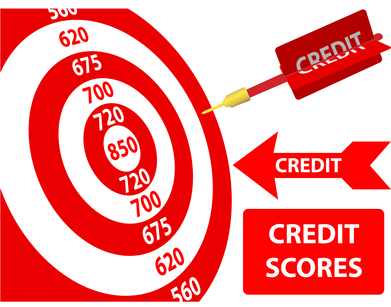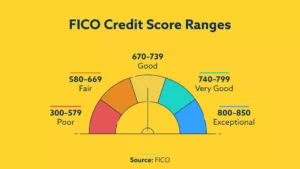 It’s time for FICO to put an end to the confusion. Consumers have been trying to figure out how credit scores are determined and why they can so drastically change for years; now, there is FICO vs. FICO 8 confusion.
It’s time for FICO to put an end to the confusion. Consumers have been trying to figure out how credit scores are determined and why they can so drastically change for years; now, there is FICO vs. FICO 8 confusion.
On April 30, 2012, FICO released a report that a growing number of consumers are nearing the perfect FICO score. FICO, the most widely used credit scores, range from 300-850. The top tier FICO score range is 800-850. The report showed an increase in consumers who have near perfect credit scores in the top.
The increase reflects the highest level since October 2008. According to FICO’s researchers 18.3% of consumers have credit scores in this range. According to Rachel Bell of FICO Labs, “Many consumers have moved into the top tier of the FICO® Score range by redoubling their efforts to maintain an excellent credit profile.
On the flip side consumers with FICO scores between 700-799 has not shown improvement. The percentage of consumers between 700-749 (15.5 percent) is the lowest since 2005, when FICO began tracking that information. The explanation for this was “…Other people have fallen into lower tiers, most likely due to the financial stress that many households have been feeling…”
The problem with these findings
FICO failed to mention the findings are based on the newest version of the credit scoring model, FICO 8. FICO 8 is not the most widely used version of the scoring model. Most lenders continue to use the previous version of FICO to evaluate a potential borrower’s creditworthiness.
In case you were wondering, there are several generations of the FICO credit scoring models dating back to 1989 when the 1st generation was introduced. FICO 8 is the 5th generation of their credit scoring model and lenders have been slow to adopt the newest version since it was first rolled out in 2009. It may take years for lenders to convert their systems to the newest version, FICO 8.
I think FICO’s report may be flawed, especially since there are differences in FICO and FICO 8. Not to mention consumers have no access to FICO 8 scores, only FICO scores.
FICO vs. FICO 8
FICO 8 was introduced in 2009. This new version is touted to be a better predictor of borrower risk. There are some major differences in FICO and FICO 8. For instance, consumers who maintain high credit card balances and continually have balances close to their credit limit will lose more points than previously lost under FICO.
This would explain the increase in consumers with near perfect scores. If a consumer normally keeps balances low or even pays in full each month, the FICO 8 scoring model rewards them even more. On the other hand consumers who may be experiencing financial difficulty and depending on credit cards to make ends meet now have lower credit scores under FICO 8.
FICO 8 can tank your credit score if you carry a balance near your credit limit or max out your credit card. FICO 8 may also help some consumers with small collection accounts $100 or less because it ignores “small-dollar nuisance collection accounts.”
According to myfico.com nearly half of consumers have FICO 8 scores within 20 points of their scores under the previous version. This means your FICO 8 scores could be 20 points higher or 20 points lower than the widely used FICO version. Confused yet?
Consumer confusion is justified
If you are like average consumers, you were probably unaware of the many generations of FICO scoring models that lenders could be using. Not only are there different generations, there are also various FICO scoring models designed for specific industries.
For instance FICO works with the credit bureaus to produce credit scores for auto lenders, banks and mortgage lenders. The industry-specific scores are designed to more accurately reflect creditworthiness in select areas. But you cannot purchase these credit scores; they are only available to businesses.
FICO’s lack of transparency in not specifying the version of the FICO score on which it based its report only adds confusion and even more mystery to credit scores.
Consumers who want to improve or rebuild credit scores should not have to operate in the dark. Not to mention, FICO 8 scores are not available to consumer; reason being according to FICO, “…myfico.com was intended to offer consumers access to the scores that are most used.”
So my question is — why conduct a study about consumers nearing perfect credit scores when FICO 8 is not widely used by lenders.
Consumers need to know as much as possible about how credit scores are calculated. More importantly, they need to have transparent information about the credit scoring formula that most lenders are using; not what FICO hopes more lenders will be using in the future.
Consumer Financial Protection Bureau
Some things just need to be regulated. FICO has way too much control in determining the financial success of consumers; and, way too little regulation. This privately owned company can determine what interest rates you pay, if you can rent an apartment or get approved for a mortgage loan, if you can get a job interview and what you will pay for insurance.
It’s just too much power not to be regulated. I hope the CFPB new target of consumer reporting agencies will help in clarifying and making credit scores not only more transparent but more accessible to the people who are actually affected everyday by them.
















